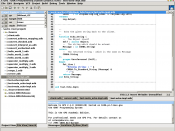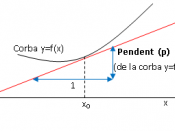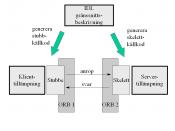November 1991, Object Management Group (OMG) which is the organization responsible for standardizing promoting Common Object Request Broker Architecture (CORBA) to answer to the need for interoperability among the rapidly proliferating number of hardware and software products available today. In this essay, we will briefly illustrate CORBA's features and its architecture. After that, readers will get more familiar with CORBA and understanding the CORBA architecture.
1. Distributed Systems
Before we discuss CORBA, one important concept we must know about it which is distributed systems. Actually, Distributed systems have been around, in one form or another, for some time, although they haven't always been called that and they certainly haven't always had the flexibility that they do now. To discover where CORBA fits in, let's briefly introduce the history of distributed systems.
Before distributed systems appeared, there were three different system models. At beginning, Monolithic Systems and Mainframes are along with come hierarchical database systems and dumb terminals also known as green screens.
Because of it, Software systems written for mainframes were often monolithic. That is the user interface, business logic, and data access functionality was all contained in one large application. By reason of this, one more flexible model came into being which Client/Server Architecture is. With the advent of the PC made possible a dramatic paradigm shift from the monolithic architecture of mainframe-based applications, many applications simply did not require the massive power of mainframes. So client/server applications typically distributed the components of the application so that the database would reside on the server (whether a UNIX box or mainframe), the user interface would reside on the client, and the business logic would reside in either, or both, components. However, one problem appeared is client/server was not without faults of its own, because database access functionality (such as embedded...


